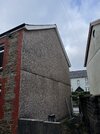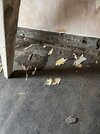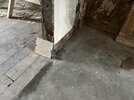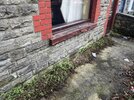Hi,
This forum has come up many times when searching for similar damp problems so I thought I’d sign up and share my problem in the hope of some advice.
It’s a 1900 solid wall house.
I am renovating my downstairs - upon removing wooden cladding and thick wall paper I’ve realised I have quite the damp problem. It seems to be contained to the gable end - ground floor.
From reading other threads on here:
- The ground levels externally seem too high.
- The concrete plinth also seem to come down too far and possibly leads to the DPC being breached?
- The render isn’t ideal but don’t wish to remove this
If rain water is coming in from the gable end external floor and breaching the DPC via the plinth, would the damp be this high internally on the walls?
Also I’ve noticed that the damp patch internally on the walls does not get any bigger (drawn around it) - just darker after heavy rain.
Do you guys think I’m on the right path?
Would removing the concrete plinth, repointing the stone/bricks behind and installing a French drain be a solution? Internally I plan to hack off the walls and try and dry them out - then use insulated plasterboard.
I’ve attached pictures of the gable end and plinth and the walls inside.
Thanks for any advice
Dan
This forum has come up many times when searching for similar damp problems so I thought I’d sign up and share my problem in the hope of some advice.
It’s a 1900 solid wall house.
I am renovating my downstairs - upon removing wooden cladding and thick wall paper I’ve realised I have quite the damp problem. It seems to be contained to the gable end - ground floor.
From reading other threads on here:
- The ground levels externally seem too high.
- The concrete plinth also seem to come down too far and possibly leads to the DPC being breached?
- The render isn’t ideal but don’t wish to remove this
If rain water is coming in from the gable end external floor and breaching the DPC via the plinth, would the damp be this high internally on the walls?
Also I’ve noticed that the damp patch internally on the walls does not get any bigger (drawn around it) - just darker after heavy rain.
Do you guys think I’m on the right path?
Would removing the concrete plinth, repointing the stone/bricks behind and installing a French drain be a solution? Internally I plan to hack off the walls and try and dry them out - then use insulated plasterboard.
I’ve attached pictures of the gable end and plinth and the walls inside.
Thanks for any advice
Dan
Attachments
-
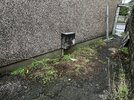 D21EC2F6-20F7-4904-A807-6A01786ABE8A.jpeg1 MB · Views: 68
D21EC2F6-20F7-4904-A807-6A01786ABE8A.jpeg1 MB · Views: 68 -
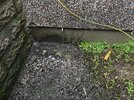 086B0391-5787-4C6B-8E64-BE5E36822DD0.jpeg995 KB · Views: 57
086B0391-5787-4C6B-8E64-BE5E36822DD0.jpeg995 KB · Views: 57 -
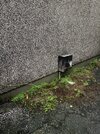 C3933646-2CC9-4DC3-8076-F4035C1B8448.jpeg1 MB · Views: 56
C3933646-2CC9-4DC3-8076-F4035C1B8448.jpeg1 MB · Views: 56 -
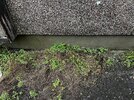 D7556816-1E0E-4A31-A386-CDA671A80BEB.jpeg1 MB · Views: 58
D7556816-1E0E-4A31-A386-CDA671A80BEB.jpeg1 MB · Views: 58 -
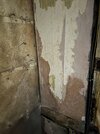 0992F752-04FC-4FC6-9D54-430B77621FC2.jpeg360 KB · Views: 61
0992F752-04FC-4FC6-9D54-430B77621FC2.jpeg360 KB · Views: 61 -
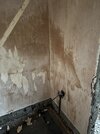 E26B515B-5242-4F69-B24D-E50F5CABDFFF.jpeg307.9 KB · Views: 65
E26B515B-5242-4F69-B24D-E50F5CABDFFF.jpeg307.9 KB · Views: 65


